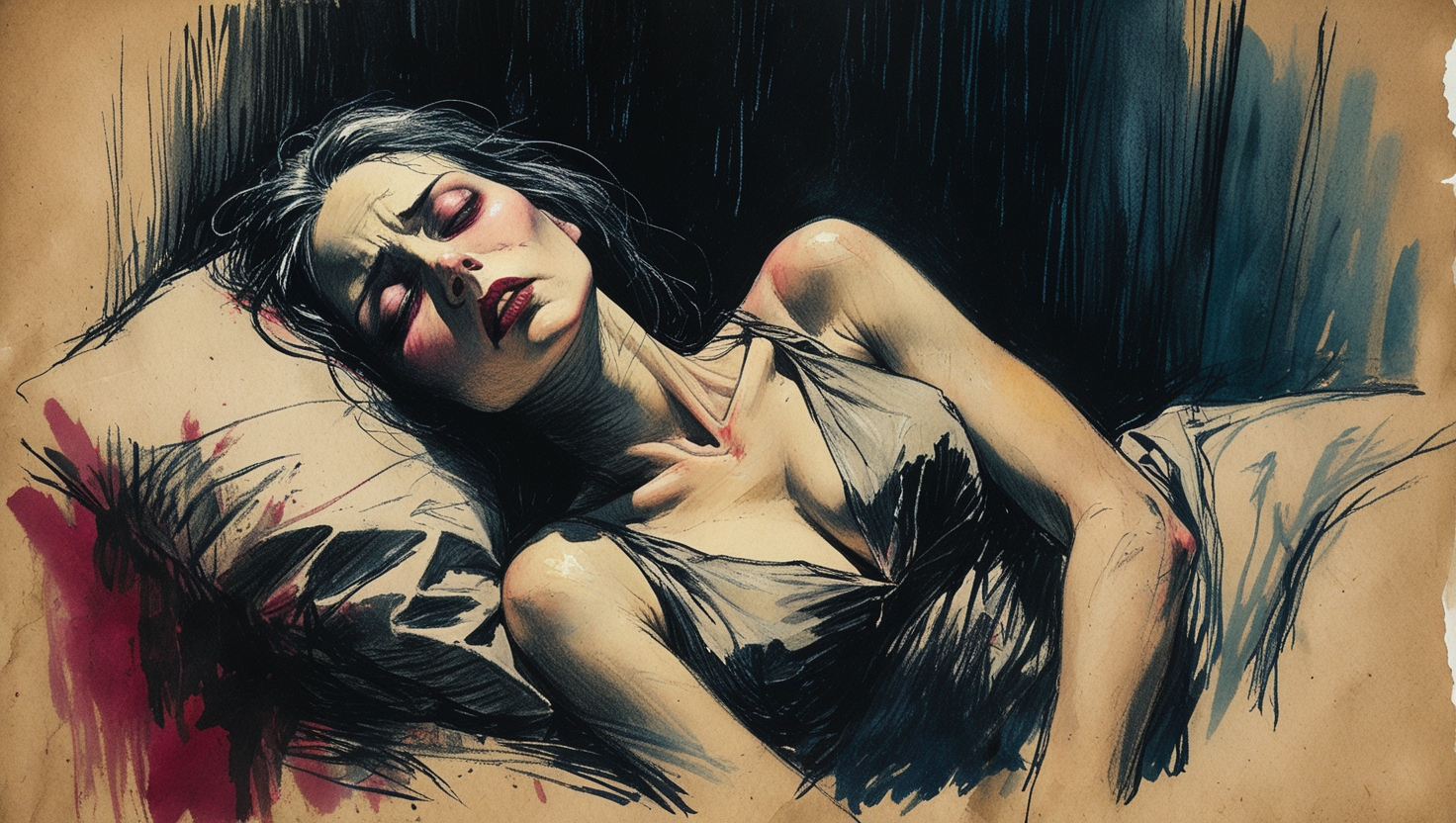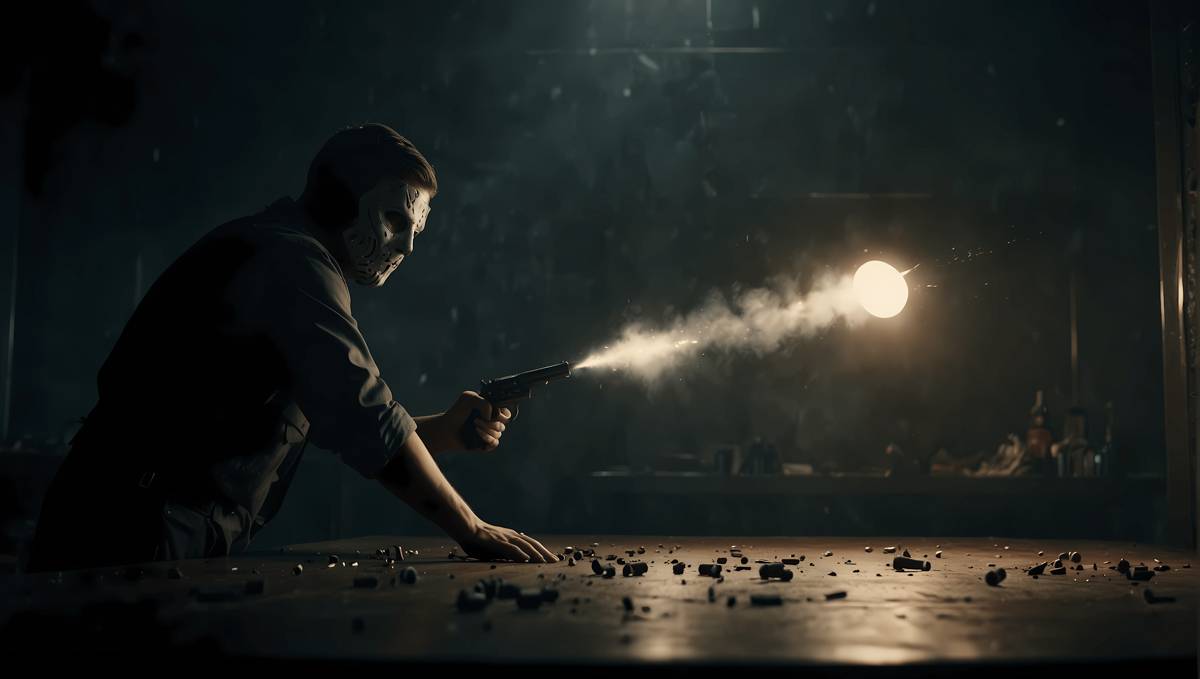„Behind the Wall of Sleep“, from Black Sabbath’s 1970 self-titled debut album, is a psychedelic, dreamlike exploration of the afterlife, altered states of consciousness, and the transition between worlds. With its haunting riffs, hypnotic groove, and cryptic lyrics, the song embodies early doom metal’s fascination with mysticism, existential dread, and surreal imagery.
The lyrics are abstract and dreamlike, evoking the sensation of crossing into another realm—perhaps death, an altered state of mind, or a visionary experience. The title may reference H.P. Lovecraft’s short story „Beyond the Wall of Sleep“, which deals with dream travel and cosmic horror, though the song’s lyrics are more poetic than directly Lovecraftian.
Musically, Behind the Wall of Sleep is driven by a groovy, blues-infused riff from Tony Iommi, a rolling bassline from Geezer Butler, and Ozzy Osbourne’s ethereal, almost hypnotic vocal delivery. The fluid, psychedelic atmosphere enhances the song’s mystical and introspective themes.
Overview
„Behind the Wall of Sleep“ appears to describe a transition between life and death, or possibly a dreamlike state where higher knowledge is revealed. The lyrics are cryptic and avoid a direct narrative, instead presenting a series of surreal, mystical images that suggest a passage beyond the physical world.
Themes of death, dreams, and spiritual awakening run through the song, hinting that the „wall of sleep“ is a barrier between different realms of existence. The song’s atmosphere and poetic language suggest an out-of-body experience, where consciousness leaves the mortal plane.
The title and themes resonate with Lovecraft’s ideas—specifically his vision of dreams as gateways to hidden cosmic truths. However, the song lacks overt horror elements, instead leaning into psychedelic mysticism and existential wonder.
Narrative Structure
- Opening: A Cryptic Vision
- The song begins without explanation, dropping the listener into a strange, mystical vision.
- The lyrics speak of „sleeping walls“ and strange forces pulling the narrator into another realm.
- This opening suggests an altered state of consciousness—either a dream, a drug trip, or even death itself.
- Verse 1: Transcendence & Revelation
- The narrator describes a state of mind where they are freed from earthly limitations.
- There’s an emphasis on rising above the mundane world, implying a journey beyond ordinary perception.
- The phrase “Now I know that the end comes” suggests awareness of mortality, but also a sense of enlightenment rather than fear.
- Verse 2: Passing Beyond the Physical Realm
- The imagery of “My eyes are blind, but I can see” suggests a paradoxical form of enlightenment—one that doesn’t rely on physical senses but on inner vision.
- The line “No more can I see the light of day” reinforces the idea that the narrator has passed beyond the physical world, either into death or into a transcendent dream state.
- Conclusion: Acceptance & the Unknown
- The song ends without resolution, leaving the listener trapped in this strange, ethereal limbo.
- The lack of a traditional conclusion enhances the dreamlike, ambiguous quality of the song, suggesting that the narrator is forever beyond the „wall of sleep.“
Themes & Symbolism
- The Afterlife & the Soul’s Journey
- The lyrics suggest a passage into another realm after death, possibly an afterlife or a spiritual awakening.
- The reference to blindness yet being able to see suggests a transformation of consciousness, where physical sight is no longer necessary for understanding.
- Dreams & Altered States of Consciousness
- The „wall of sleep“ represents a barrier between the conscious world and another mysterious, hidden reality.
- This aligns with the psychedelic counterculture of the late ‘60s, where expanding consciousness was a major theme in rock and metal.
- Existentialism & Mysticism
- The narrator embraces the unknown, rather than fearing it.
- There’s a philosophical tone, questioning what lies beyond physical existence and how perception changes in different states of being.
- H.P. Lovecraft Influence
- The title closely resembles Lovecraft’s Beyond the Wall of Sleep, a story about dream travel and cosmic consciousness.
- While Sabbath’s lyrics do not directly reference Lovecraftian horror, they share his sense of awe and fear of the unknown.
Musical & Emotional Impact
- Groovy, Hypnotic Riffing
- Iommi’s mid-tempo bluesy riff creates a trance-like effect, reinforcing the dreamlike, drifting atmosphere.
- The bassline by Geezer Butler is unusually fluid and rolling, adding to the sense of floating between worlds.
- Psychedelic & Heavy Doom Elements
- The slow, almost shuffling rhythm gives the song a stoner rock feel, making it both hypnotic and unsettling.
- The song straddles doom metal and psychedelic blues, showing how early Sabbath blurred the lines between genres.
- Ozzy’s Mysterious, Enigmatic Vocals
- His delivery is less aggressive and more ghostly, adding to the disembodied, dreamlike sensation of the song.
- There’s an eerie calmness in his voice, as if the narrator has already accepted their fate beyond the wall of sleep.
Legacy & Reception
- A Cult Classic Among Early Sabbath Songs
- While not as famous as Black Sabbath, War Pigs, or Iron Man, this song remains a fan favorite for its unique, mystical vibe.
- It’s less structured than other Sabbath songs, making it feel like a fever dream rather than a traditional metal track.
- Influence on Doom & Stoner Metal
- Bands like Electric Wizard, Sleep, and Cathedral took inspiration from this trippy, heavy, hypnotic style, creating entire subgenres (doom metal, stoner rock) influenced by its sound.
- The song’s bluesy groove mixed with psychedelic doom elements became a template for generations of metal bands.
- Connection to Lovecraftian Horror in Metal
- While this song isn’t as explicitly Lovecraftian as later metal tracks (e.g., Metallica’s The Thing That Should Not Be), it helped pave the way for cosmic horror themes in metal.
- Bands like Morbid Angel, The Great Old Ones, and Nile would later expand on these ideas, using lyrics about dream-travel, ancient knowledge, and realms beyond death.
Final Verdict
„Behind the Wall of Sleep“ is a mystical, hypnotic journey into the unknown, combining psychedelic blues, doom-laden riffing, and surreal lyrics to create a haunting and introspective metal experience.
With its themes of transcendence, dreams, and the afterlife, the song captures early Sabbath’s fascination with the mystical and existential, making it a standout track in their debut album. Its groovy yet heavy sound, combined with its enigmatic lyrics, ensures its place as a foundational influence in the evolution of doom and stoner metal.



